MARKET OVERVIEW
The Stability, efficiency, and on-road safety of the vehicle relies on the global car wheel balancing weight market. The market thrives on the problem of manufacturing and delivering balancing weights that counter-balance imbalances in the car’s wheels for alleviating vibrations to enhance performance in driving. The advancement of wheels with higher technology and materials continues to increase the demand for better balancing solutions and, hence determines the path the market should take.
Wheel balancing weights are used to reduce uneven tire wear and enhance the fuel efficiency. They are installed around the wheel assembly to provide counterbalancing in case of weight differences arising from manufacturing processes and normal usage. The market incorporates different varieties of balancing weights: lead, steel, zinc, and composite materials. It deals with different ranges of vehicles passenger cars, commercial vehicles, and also electric vehicles. Demand and trend in regards to producing environment-friendly, nonpolluting weights will be a significant influence in upcoming production and adoption. Principally, the market players include automobile manufacturers and aftermarket service suppliers. First of all, it initiates development. Then, it starts distributing.
Chain of supply from raw material suppliers to manufacturers, distributors, retailers, leading them to accomplish exact needs of automobile manufacturers and service providers. Regional variations in terms of regulations, material preferences, consumer demand continue to impact the market, and emerging economies provide a new platform for extension in the market.
Vehicle dynamics and tire technology advances will directly influence wheel balancing weight designs and implementations. With the proliferation of new electric and hybrid vehicles, weight distribution dynamics would change thereby causing new balancing requirements. The influence of integration of automation in tire and wheel assembling also has important effects on efficiency and accuracy in wheel balancing techniques.
The Global Car Wheel Balancing Weight market will be influenced by environmental concerns and regulatory policies. Lead-based weights will be restricted due to environmental hazards, and manufacturers will be forced to use alternative materials that provide similar or better performance without any ecological issues. As the automotive industry shifts toward lightweight and durable materials, balancing weight manufacturers will adjust to remain compatible with the changing wheel composition.
Market participants will explore strategies to enhance product durability, corrosion resistance, and precision in weight placement. The increasing adoption of adhesive-based weights over traditional clip-on variants will reflect a shift in installation preferences, especially with modern alloy wheels that require non-invasive balancing solutions. Research and development efforts will continue to refine manufacturing techniques, improving the effectiveness and longevity of balancing weights.
Regional markets will vary in demand due to differences in vehicle output, growth in the aftermarkets, and enforcement of regulatory standards. Developed regions will take on more aspects of environmental compliance and technology, whereas developing markets will increase demand with ever-higher vehicle ownership rates and infrastructure development. The digital platform also becomes a facilitator for balancing weight products accessibility for manufacturers and suppliers into more customer bases.
The Global Car Wheel Balancing Weight market would evolve with the development of industry trends, improvements in technology, and policy measures. With further automotive engineering advancements, wheel balancing will continue to be a critical need for the future in terms of performance and safety. Therefore, the manufacturers and suppliers would change their strategies accordingly in order to fit the needs of the automotive industry, making sure that wheel balancing would still remain an integral part of vehicle maintenance and efficiency.
Global Car Wheel Balancing Weight market is estimated to reach $4,601.10 Million by 2032; growing at a CAGR of 6.4% from 2025 to 2032.
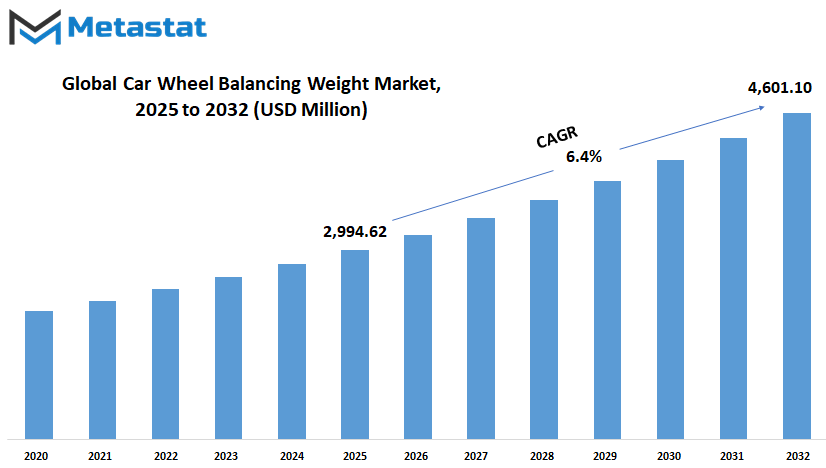
GROWTH FACTORS
The increasing demand in the number of passenger and commercial vehicles worldwide immensely influences the urgency of proper maintenance of wheels. With more road usage, conditions for smooth safe driving have became the most necessary requirement for manufacture and users, respectively. Proper wheel balancing proves to be of utmost importance due to its prime contribution towards developments in vehicle stability, reduction of tire wear rate, and improvements in overall riding comfort.
This growing focus on safety and efficiency is expected to drive the expansion of the Global Car Wheel Balancing Weight market in the coming years. Safety regulations are becoming more stringent, compelling automakers and service providers to adhere to high standards for vehicle operations.
Governments across various regions are implementing policies that promote safer road conditions, further fueling the demand for wheel balancing solutions. The market is expected to grow steadily because more and more consumers are becoming aware of the benefits of well-maintained wheels. Increasingly, vehicle owners and fleet operators prioritize proper wheel balancing to extend tire life and improve fuel efficiency. Wheel balancing weights have become an integral component in routine vehicle servicing. But there may be some challenges that delay the growth of the market. One of the major concerns is the environmental impact of lead-based wheel weights, which have been in use for decades.
Due to the toxic nature of lead, many regulatory bodies have placed restrictions on its use, pushing manufacturers to find alternative materials. This shift has led to a rise in the adoption of steel, zinc, and composite-based balancing weights, which are considered safer for the environment. While these alternatives offer a viable solution, the transition has created challenges related to cost and production efficiency.
Another factor that could impact the growth of the Global Car Wheel Balancing Weight market is the increasing preference for alloy wheels. Many modern vehicles come equipped with lightweight alloy wheels, which enhance performance and aesthetics. However, traditional clip-on weights do not always adhere well to these wheels, leading to compatibility issues.
This has forced manufacturers to develop new balancing solutions that work effectively with alloy wheels, creating both hurdles and opportunities for innovation. Looking ahead, the market is expected to witness new developments, particularly in eco-friendly and adhesive-based wheel weights. These options offer a more green-friendly choice, doing well both in terms of protecting the environment and ensuring fair weight distribution over wheels.
As automotive technology advances further, there will be an increased demand for more advanced, high-quality balancing solutions. Companies that are investing in research and development on durable, lightweight, and non-toxic balancing weights will advance their businesses. With ongoing advancements and a shift toward sustainability, the market is set to experience significant transformations in the years to come.
MARKET SEGMENTATION
By Product Type
The Global Car Wheel Balancing Weight market plays a crucial role in the automotive industry, particularly in ensuring the proper functioning of car wheels. Wheel balancing is an essential process that helps prevent unnecessary wear and tear on tires, as well as ensuring smooth vehicle handling and driving comfort. The market for car wheel balancing weights is expected to grow significantly in the near future based on rising demand for vehicles and changes in technology within the automobile. On the basis of Product Type, the market can be segmented into two main product types: Clip-On Weights and Adhesive Weights.
Each of these product types of wheel balancing has its use. Clip-On Weights are applied to the outside of a wheel, and these are typically used on alloy wheels. These offer easy installation, and they are also typically factored into situations in which the rims of the wheel need more balancing support. Clip-On Weights are also very durable and suitable for balancing big wheels that are often applied to sports and heavy vehicles. For placing in between the steel wheels, the most unobtrusive weights of Adhesive Weight are used more.
They can very well be used considering their minimalist character on light steel wheels as they don’t affect vehicle looks. Along with aesthetics of the automobile remaining the talk for the market lately, the success of Adhesive Weights stands high in meeting this aesthetic attribute without giving anything up to compromise wheel performance.
The Global Car Wheel Balancing Weight market will, therefore, maintain a trend of positive evolution with advancements in technology in the future. Meanwhile, the greater demand for lightweight and efficient materials across the globe will necessitate lighter balancing solutions. For example, new kinds of adhesives or better alloys may come into play to even further increase the efficiency of balancing; this, in turn, would decrease production costs and improve the eco-footprint. Additionally, there is an increasing trend in the electric vehicle (EV) market, which may also influence the demand for specific types of wheel balancing products.
As electric vehicles become more mainstream, wheel balancing solutions may need to adapt to cater to the unique demands of these vehicles, such as balancing larger, heavier wheels with a greater focus on energy efficiency. In conclusion, the Global Car Wheel Balancing Weight market is expected to further grow and be innovative with this segmentation into Clip-On Weights and Adhesive Weights.
As automotive technologies advance and the market demands evolve, both kinds of balancing weights will likely continue to play a vital role in the automotive industry’s ability to meet the demands of modern vehicles and their users. The future of this market looks promising, with potential for further developments and improvements in balancing techniques and materials.
By Vehicle Type
The global car wheel balancing weight market is expected to grow at a significant rate over the next few years, largely due to increased demand for better vehicle safety and performance. In this regard, one of the most important aspects that are promoting growth in the market is awareness of vehicle maintenance and the crucial role played by wheel balancing in the overall efficiency of a vehicle. The market will likely expand with increased recognition of the value of making an investment in quality wheel balancing weights, as both consumers and manufacturers move to ensure smooth driving experiences.
By vehicle type, the market is broadly categorized into passenger cars, commercial vehicles, and two-wheelers. Each of these categories uniquely contributes to defining the overall market dynamics. Passenger cars will continue to drive the demand for wheel balancing solutions as they constitute most of the vehicles in use globally. With most people nowadays preferring personal vehicles as an attribute of urbanization and increased convenience, proper balancing of the wheels will be integral. The passenger car manufacturers will also work to enhance vehicle design and include better wheel balancing systems to increase safety and ride quality, thus driving the market forward.
Commercial vehicles, including trucks, buses, and other heavy-duty vehicles, are another large segment of the market. With the ever-increasing demand for goods and services across the globe, the transportation industry is booming. This increase will further lead to a surge in commercial vehicles. Consequently, the market for wheel balancing weights will surge. Balanced tyres reduce fuel consumption and bring down tire wear. Increased safety in transportation of goods is also a critical factor for fleets.
Another significant category that will spur growth is the segment of two-wheelers, whose growth is tremendous in many regions. As cities become more congested, many people are opting for motorcycles and scooters as an efficient and affordable mode of transport. The need for proper wheel balancing is just as important for two-wheelers as it is for larger vehicles, as it ensures better handling, comfort, and safety. With new technologies being added to the process of wheel balancing, the electric two-wheelers will further contribute to the growth of this segment.
Looking forward, the global car wheel balancing weight market is expected to grow across all types of vehicles. With advancing technology and the higher production of vehicles, the demand for better wheel balancing will rise. This is due to manufacturers' determination to achieve better safety, performance, and efficiency for all kinds of vehicles. Presently, prospects in the market are very promising, and the sector has a good chance for innovative growth in any area.
By Distribution Channel
The Global Car Wheel Balancing Weight market plays a crucial role in ensuring that vehicles operate smoothly, providing a comfortable driving experience and extending the lifespan of tires. As technology advances, the demand for efficient and precise wheel balancing solutions continues to grow. The market is expected to witness further expansion, driven by increasing vehicle production and the need for improved vehicle performance. Another way in which the market is segmented and which facilitates this market growth is by means of distribution channels, where the OEM and Aftermarket are considered as two broad market segments.
The OEM wheel balancing weights usually provided by a manufacturer during a vehicle’s manufacturing process. These weights are essential for maintaining proper tire balance as the vehicle leaves the factory, ensuring that it operates with the highest level of stability and safety. Since OEM products are directly linked to vehicle manufacturers, they guarantee a level of quality and compatibility that vehicle owners can rely on. As the automotive industry grows globally, OEM weights will continue to be in high demand, as new vehicles require reliable and efficient solutions from the start.
On the other hand, the Aftermarket segment is expected to see significant growth in the coming years. The Aftermarket consists of products that are sold after the vehicle has already been sold to the consumer. This includes wheel balancing weights sold to individuals or repair shops looking to maintain or replace their car’s wheel weights over time. Aftermarket products offer a wider variety, giving consumers and repair professionals more flexibility when selecting a product. With the rise in the number of older vehicles requiring maintenance, the Aftermarket will likely see more demand. Additionally, consumers will look for affordable options that do not compromise on quality.
Looking into the future, the Global Car Wheel Balancing Weight market will be influenced by trends such as electric vehicles and autonomous driving technology. As these technologies continue to advance, they will introduce new standards and requirements for vehicle balance, potentially leading to new types of wheel balancing weights. Also, toward sustainability, the importance of which is growing rapidly, the company is likely to see changes in the selection of eco-friendly materials for wheel weights. Innovations in lightweight and recyclable materials will propel growth both in OEM as well as Aftermarket segments.
In summary, the Global Car Wheel Balancing Weight market is likely to grow steadily, as demand for efficient and sustainable wheel balancing solutions will continue to increase. The OEM and Aftermarket channels are characterized by different types of requirements within the market, and each channel drives demand in different parts of the market. As technology develops and consumer tastes improve, the market is going to continue developing, bringing new opportunities and challenges for manufacturers as well as distributors.
|
Forecast Period |
2025-2032 |
|
Market Size in 2025 |
$2,994.62 million |
|
Market Size by 2032 |
$4,601.10 Million |
|
Growth Rate from 2024 to 2031 |
6.4% |
|
Base Year |
2024 |
|
Regions Covered |
North America, Europe, Asia-Pacific, South America, Middle East & Africa |
REGIONAL ANALYSIS
The global Car Wheel Balancing Weight market is a dynamic and diversified industry that covers a number of regions around the world, each having its own specific characteristics and trends. Looking ahead, it would be important to consider the regional breakdown of the market and the growing opportunities in each area. For example, North America is a key contributor to this area through the major markets of the U.S., Canada, and Mexico, pushing for innovation in the sector and demanding car wheel balancing solutions. Of course, technology improves further, which would finally bring more complex products into the region: greater efficiencies and more precise wheel balancing. The U.S. in particular is expected to maintain its position as a leading market due to its large automotive sector and focus on quality standards.
In Europe, countries such as the UK, Germany, France, and Italy are at the forefront of the car wheel balancing weight market. These countries have long been known for their strong automotive industries, which have led to consistent demand for wheel balancing solutions. The European market will be directed toward more eco-friendly and environmentally responsible solutions due to the growing rigidity in environmental regulations. This region will witness technological progressions in automobile safety and performance, which will enhance the acceptance of wheel balancing weights that can both enhance the performance of a vehicle and decrease carbon footprints.
The Asia-Pacific region will have the largest growth in this segment in the near future as it is developing its automotive sector rapidly. Key markets like China, India, Japan, and South Korea are seeing a surge in demand for car wheel balancing weights due to increasing vehicle production and a rising number of consumers investing in vehicles. As this region continues to urbanize and modernize, the demand for high-quality wheel balancing solutions is expected to soar. The growing middle class in countries like India and China will further fuel the market, with more people able to afford vehicles and advanced automotive services.
South America, with countries such as Brazil and Argentina, is a smaller but growing market. The region's increasing focus on vehicle safety and maintenance will contribute to a steady rise in demand for car wheel balancing weights. Although not as large as other markets, the South American market holds potential, especially as more consumers invest in their vehicles' upkeep and performance.
The Middle East and Africa, with all their diverse needs in the automobile sector, have unique opportunities. The UAE, South Africa, and Egypt are going to remain important countries in this region. In particular, the growing aftermarket automotive sector will create demand for solutions that maintain vehicle safety and performance, such as wheel balancing weights. With improving infrastructure and increasing vehicle ownership, this market is likely to grow steadily.
This brings the global Car Wheel Balancing Weight market into continued development and evolution. Opportunities abound within each region, and companies working in that space will have to adapt to local market needs and trends. Technological advancements, increased vehicle production, and an increased emphasis on safety and sustainability should ensure that this market remains impressive in all regions.
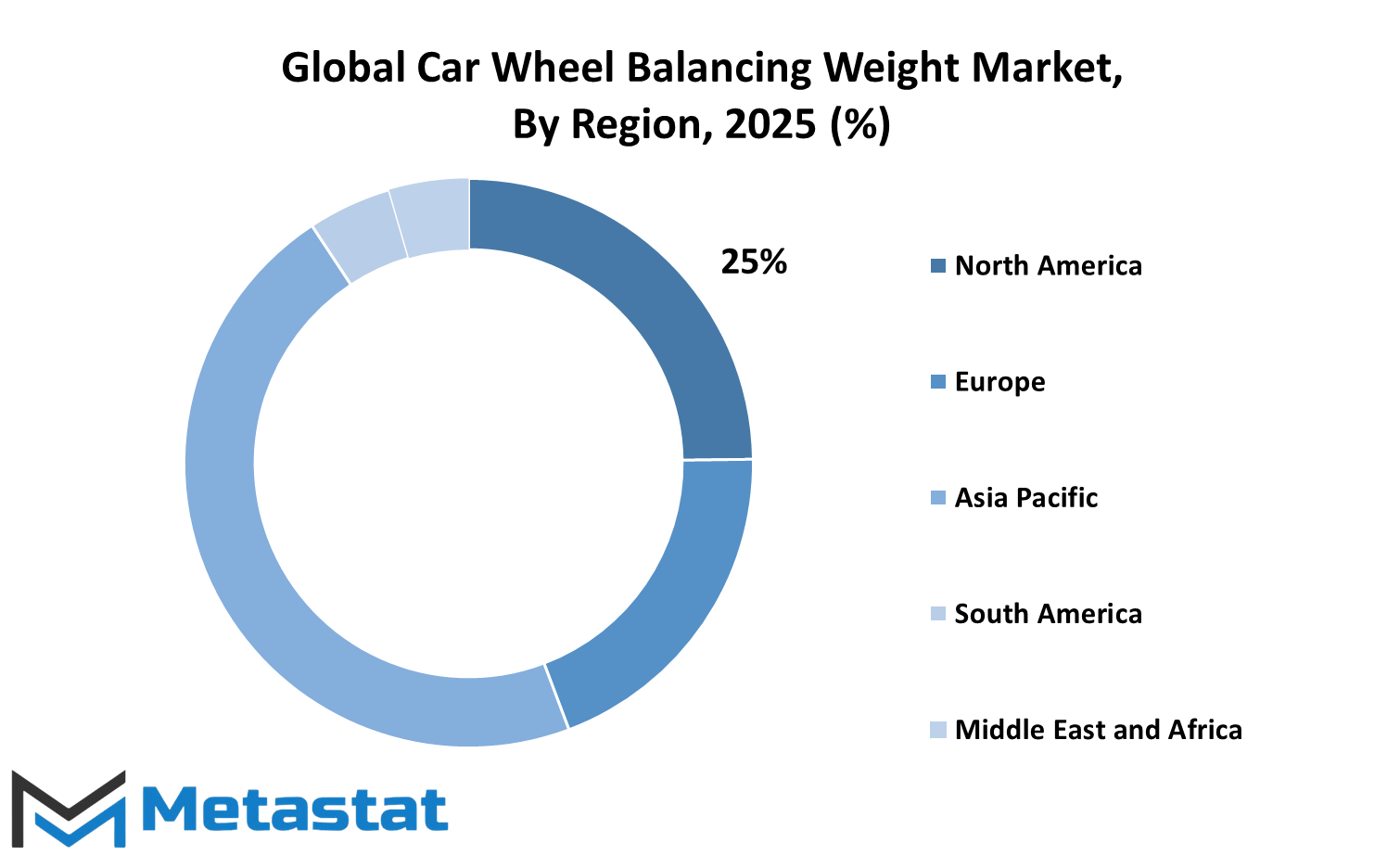
COMPETITIVE PLAYERS
In the global car wheel balancing weight market, its influence is greatly seen in the automotive industry, as it determines a lot of the vehicle's smooth operation. Balancing the wheels will prevent any vibrations, thereby reducing the tiring wear and ensuring overall stability of the vehicle. The market for these products has been increasing steadily over the years, driven by an increase in the demand for automobile vehicles worldwide and increased consciousness of the point of proper wheel balancing. Along with this trend, there is more need for high-quality wheel balancing weights as the growth in the automotive industry continues.
Key players in the Global Car Wheel Balancing Weight market include companies such as Cascade Wheel Weights, Wegmann Automotive, Bharat Balancing Weights, Plombco Inc., Hofmann Power Weight, Perfect Equipment Inc., Unialiner, Shanghai Baolong Automotive Corporation, Hebei Longrun Automotive Co., Ltd., Wurth Group, and TOHO KOGYO Co., Ltd. These companies are responsible for producing a wide range of wheel balancing weights used in both passenger and commercial vehicles. The market competitive landscape is characterized by a number of these established players, each of whom brings along their own strength and innovation.
The car wheel balancing weight market will shift into a new configuration of products, as the industry of automobiles increasingly moves toward EVs, to be more environmentally friendly and focus on lightweight sustainable materials. This trend will significantly affect the types of wheel balancing weights that will be used in vehicles.
Companies are probably going to spend more in research and development to introduce new materials and manufacturing processes with the aim of reducing the total weight of the vehicle while at the same time ensuring maximum performance and safety. The demand for more eco-friendly products will also push the industry towards the utilization of recyclable and biodegradable materials during the production of wheel weights.
Furthermore, advancements in technology may also lead to improvements in the design of balancing weights. The integration of sensors and smart technology could result in more accurate and efficient balancing systems, potentially leading to a reduction in the number of weights required for each wheel. Companies operating in this space will need to stay ahead of these technological advancements in order to maintain a competitive edge.
So, the Global Car Wheel Balancing Weight market will continue to evolve. Nevertheless, both consumers' demands and the continuously changing technological environment will drive this shift. Companies that adapt to these changes and innovate about the market's needs are well-positioned to succeed in the coming years.
Car Wheel Balancing Weight Market Key Segments:
By Product Type
- Clip-On Weights
- Adhesive Weights
By Vehicle Type
- Passenger Cars
- Commercial Vehicles
- Two-Wheelers
By Distribution Channel
- OEM (Original Equipment Manufacturer)
- Aftermarket
Key Global Car Wheel Balancing Weight Industry Players
- Cascade Wheel Weights
- Wegmann Automotive
- Bharat Balancing Weights.
- Plombco Inc.
- Hofmann Power Weight
- Perfect Equipment Inc.
- Unialiner
- Shanghai Baolong Automotive Corporation
- Hebei Longrun Automotive Co., Ltd.
- Wurth Group
- TOHO KOGYO Co., Ltd.
WHAT REPORT PROVIDES
- Full in-depth analysis of the parent Industry
- Important changes in market and its dynamics
- Segmentation details of the market
- Former, on-going, and projected market analysis in terms of volume and value
- Assessment of niche industry developments
- Market share analysis
- Key strategies of major players
- Emerging segments and regional growth potential



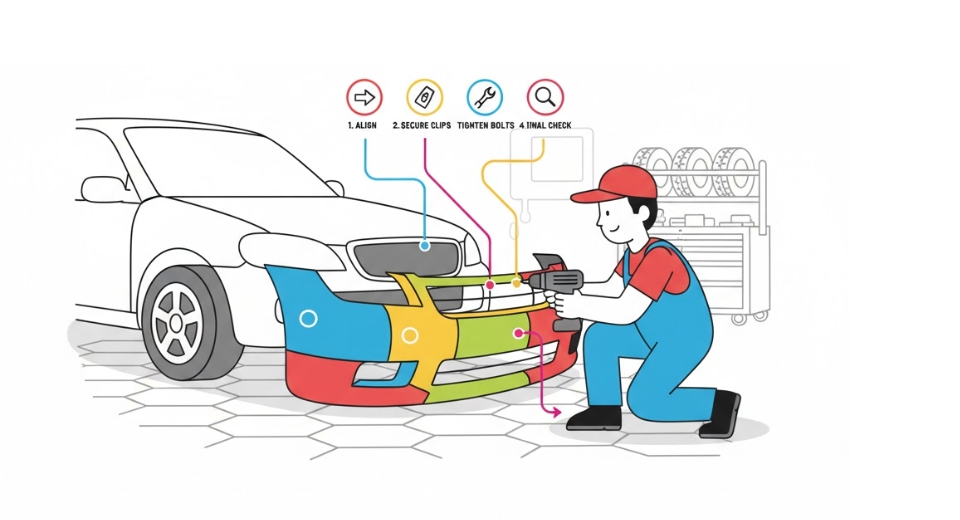
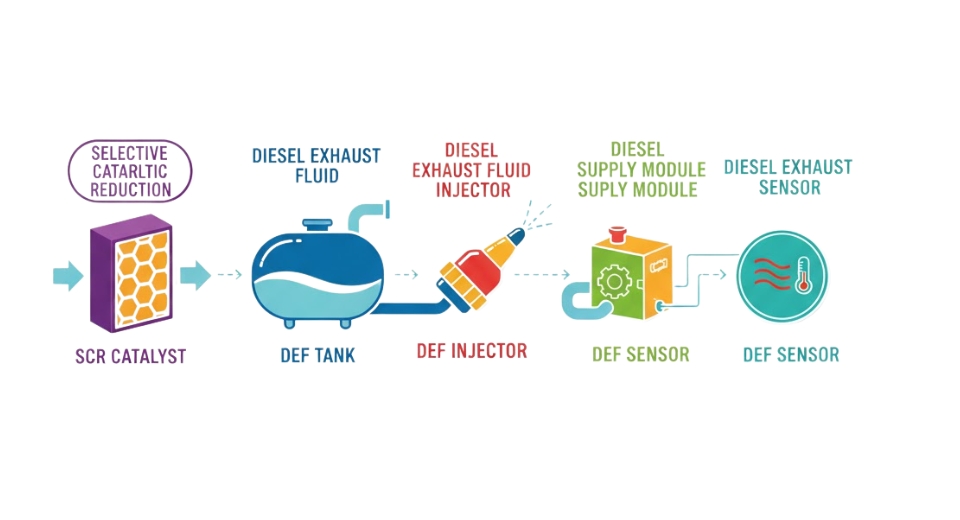
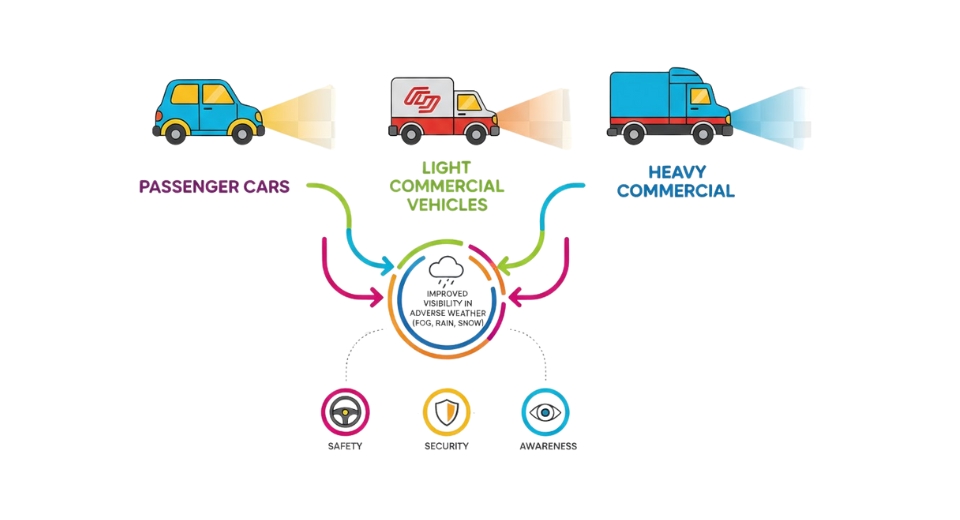





 US: +1 3023308252
US: +1 3023308252






